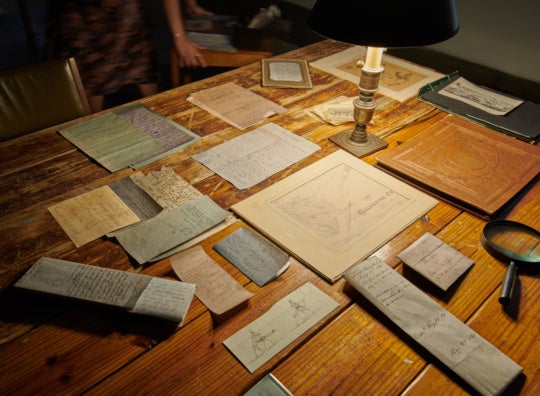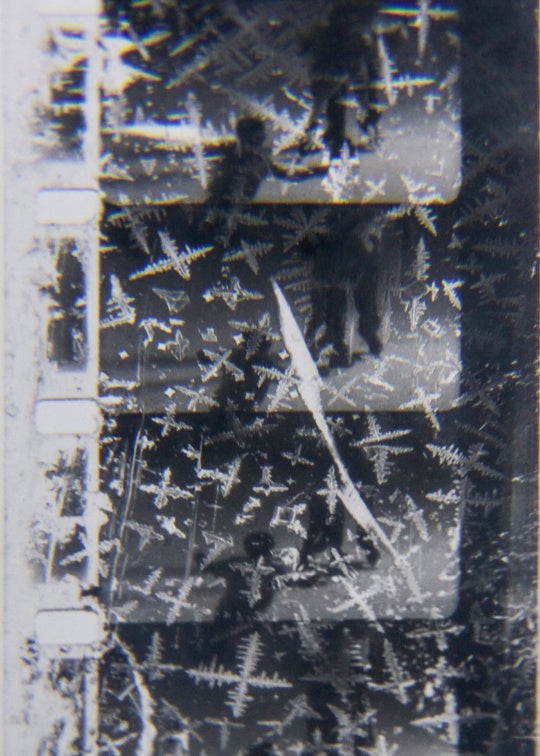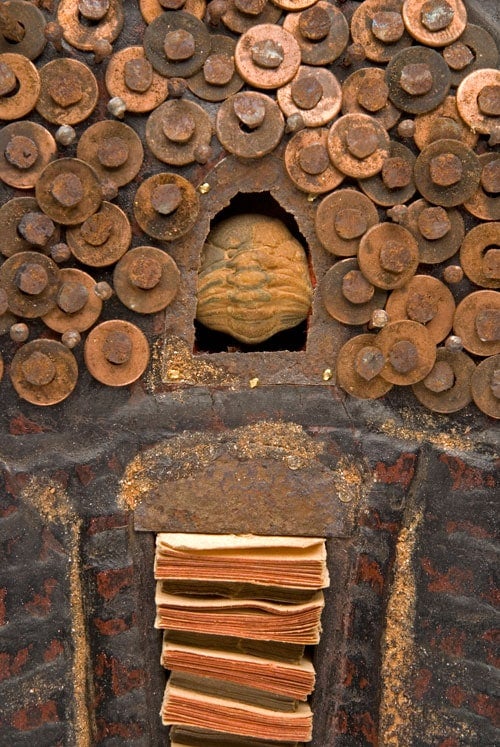
Glasgow-based wildlife photographer David Yarrow officially kicked off an international tour of his works with the exhibition “Wild Encounters” and the release of the accompanying catalogue at Tinney Contemporary in Nashville on October 1. The evening before, he welcomed a music-industry-studded audience to an intimate, invitation-only preview at Tinney. Apparently, Reba McEntire and Ronnie Dunn, among others, are fine art appreciators. The drama of Yarrow’s larger-than-life, black-and-white beasts, however, stood up well to the hoopla of their celebrity showing.
Fueled by the reality of humankind’s “dreadful tenancy” of planet Earth, Yarrow intends to convey a sense of danger in his photographs to reflect the actual endangerment of wildlife and raise awareness of conservation efforts. He is mindful that wildlife photography has lost its sense of risk and adventure with the development of telephoto lenses, but he dismisses a safe distance from his subjects in favor of an authentic one, as in up close and in your (or an animal’s) face. Yarrow as a person is likable. He is the number one selling wildlife photographer in Europe and even has the endorsement of Prince William, who wrote the accompanying book’s foreword. As hesitant as I am to sip the Kool-Aid of what — with one negligible tip of the scale — could be interior decorator fodder, I sense a respectable purpose at play.

While the organization of the works within the gallery offers a nice balance of threatening versus endearing animals, and single- versus multifigured compositions, a more thematic ordering of the photographs emerges in three parts: the danger factor, animal and human, and human as animal. Yarrow cited The Revenant movie of Leonardo DiCaprio fame and its daredevil cinematographer Emmanuel Lubezki as inspiration for his goal of viewer immersion. Yarrow has faced down a Kodiak bear, a tiger, and even the king of the jungle, but the arguably most chilling image in the exhibition is Wolf of Main Street. This photo is the product of happenstance. While on break during a shoot in the wilderness of Montana, Yarrow remarked that the interior of an old bar would be “the most normal place to see a wolf” skulking about in a quintessential Western ghost town. Yarrow used a rehabilitated wolf for the shot and captured its attention by wearing a string of chicken fillets around his neck. Yarrow notes the importance when photographing predators of positioning oneself lower than the animals’ eye level to maintain authenticity of nature, made more difficult here by the low light and a mere centimeters-long depth of focus. Oddly enough, the last print of this editioned photograph was purchased by DiCaprio, perhaps in reference to his role in The Wolf of Wall Street.

“This picture’s going to change your life,” a friend told Yarrow about Mankind 3, a panoramic photograph he shot in South Sudan in late 2014. The artist traveled 200 miles north of Juba to document the previously undocumented “raw enormity” of a Dinka cattle camp. Yarrow used a ladder to establish height over the topographical flatland and chose the smoke diffused by tribes to repel mosquitos as opposed to a clichéd sunset for a backdrop. Coincidentally, Mankind depicts an inverted dark-light silhouette compared to the figures in Rembrandt’s The Night Watch (1642), which Yarrow had set out to emulate. In Mankind, a young man, small enough to perch atop a wooden staff, is dark against a gray sea of 25,000-plus cattle; whereas The Night Watch bathes three main figures in light against a night sky (although jaggedly angled spears, staffs, and rifles along the horizon remain consistent between the images). The greater difference in Yarrow’s work, and perhaps the reasoning for the reverse silhouette, is that it’s more of an animalscape with scant people sprinkled about. While the sheer number of cattle steals the scene in Mankind, the relationship between the Dinka shepherds and their animals is reportedly complex: “Mankind is heavenly on once glance and Dante’s hell on the other,” says Yarrow, because we tend to protect nature only when it benefits us.

Capable of hell, even humans can be trumped. In Antz, dismantled oil tankers completely dwarf the three tiny figures at the bottom of the frame. It’s not only the disparate scale that illuminates the fragility of human life, but also the backbreaking toll of the Bangladeshi ship-breaking industry on humans. Child labor laws and worker rights that are actually enforced and a general “tidying up” of the yards have drastically improved worker conditions in Bangladesh, but for decades these people were at the bottom of the industrial food chain, so to speak, like animals to be devoured by industry.
Yarrow asserts that “photography is not about the camera; it’s about access. The camera is just the conduit.” He considers his photographs to be visual essays that convey as much story as they do beauty, or non-beauty in the case of the ship yard. You may be surprised at how much you find yourself thinking beyond the picture plane days after you leave the gallery. These images stick with you, animal lover or not.
Elaine Slayton Akin is an arts writer and nonprofit professional in Nashville by way of Little Rock. She works at the Frist Center for the Visual Arts and is a member of the Inter-Museum Council of Nashville. Her writing has been featured in Nashville Arts, Arkansas Life, Number, and At Home in Arkansas magazines.




